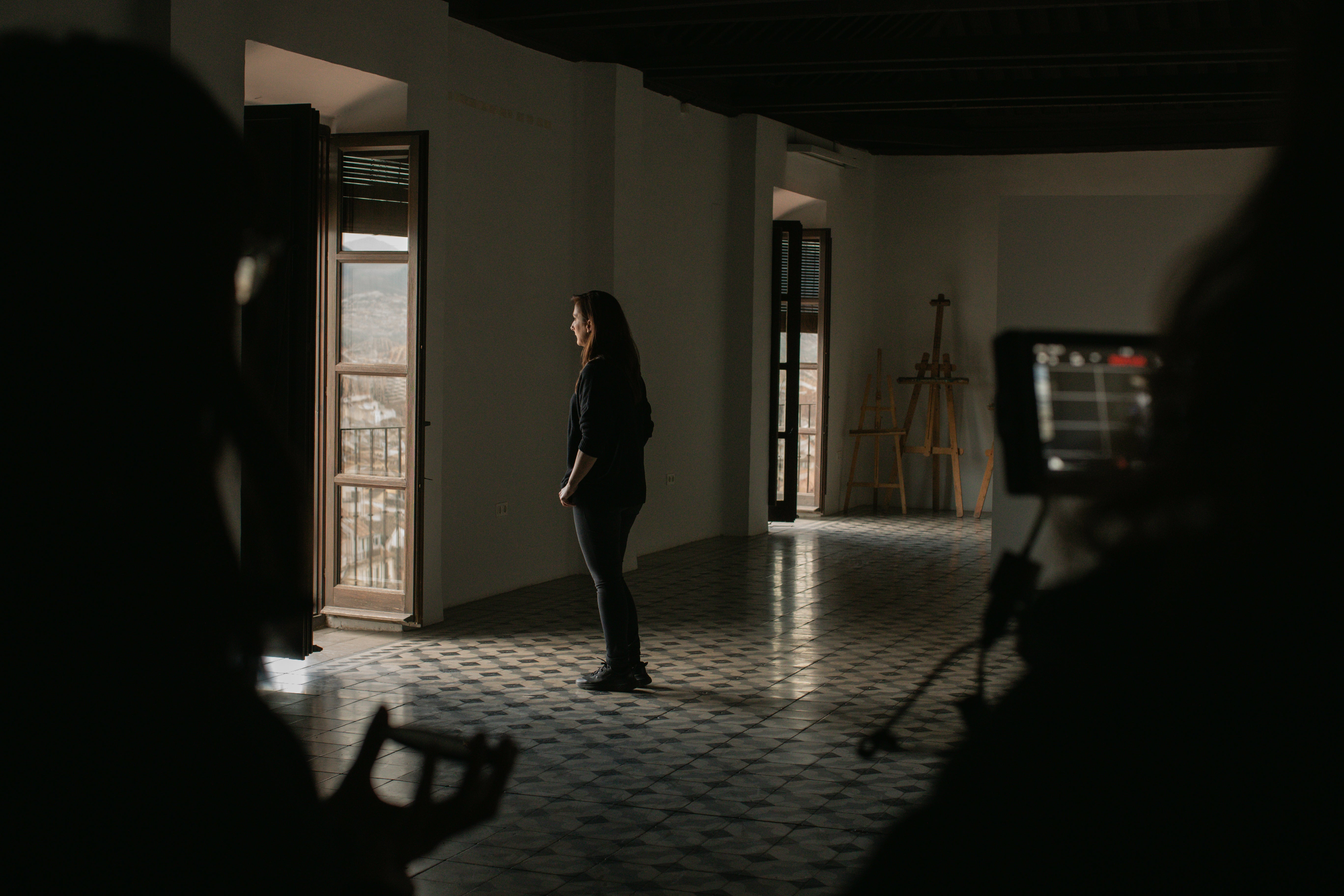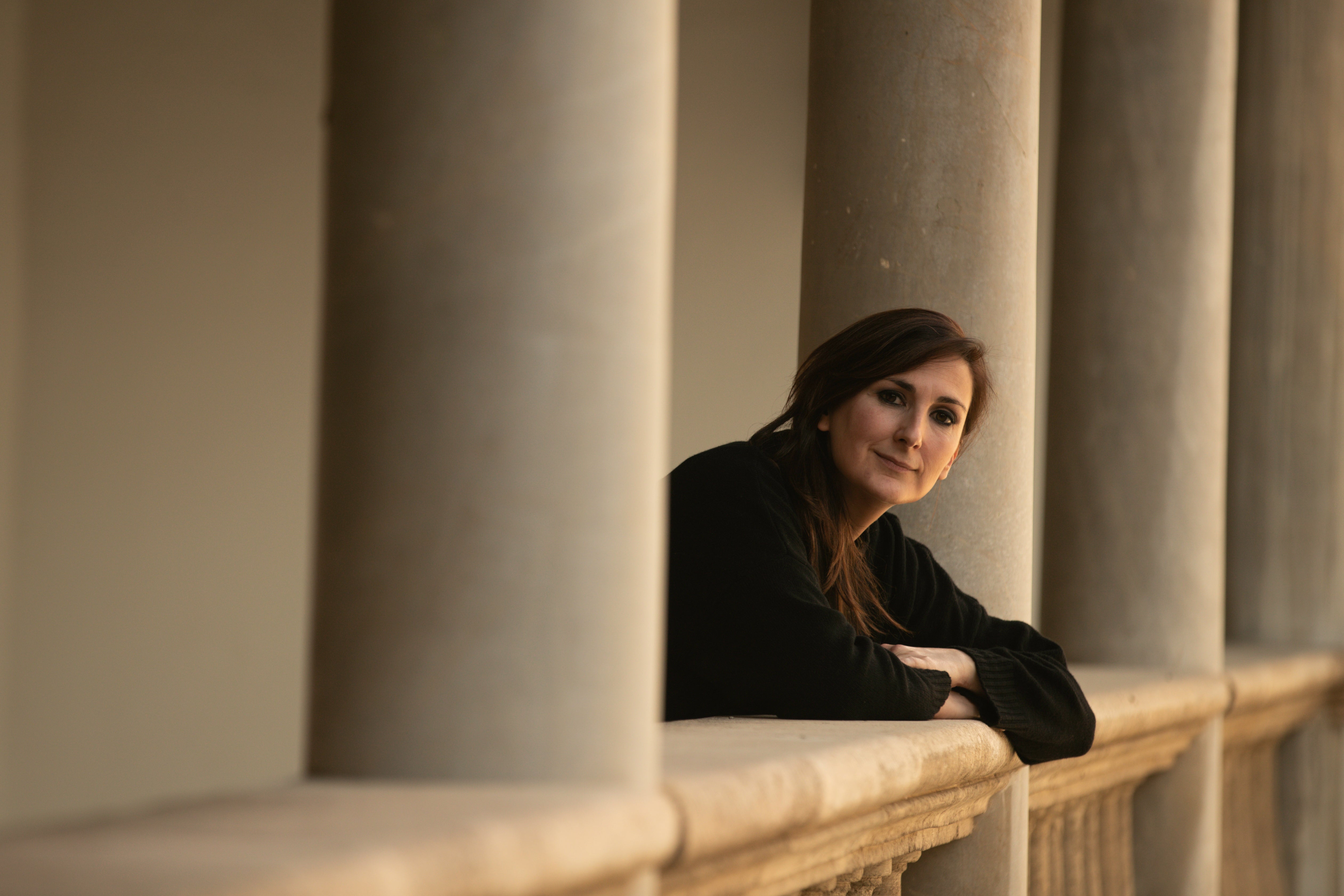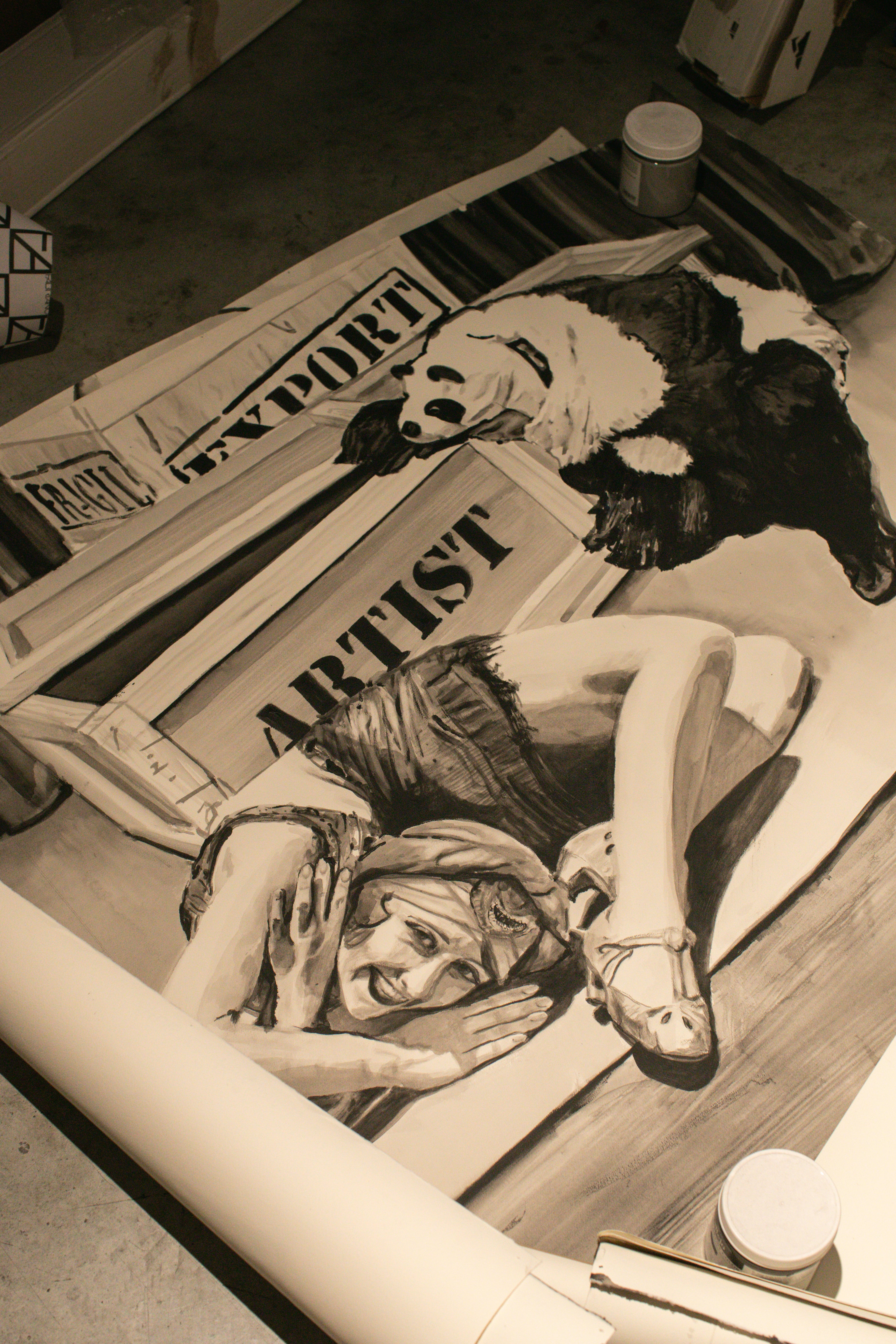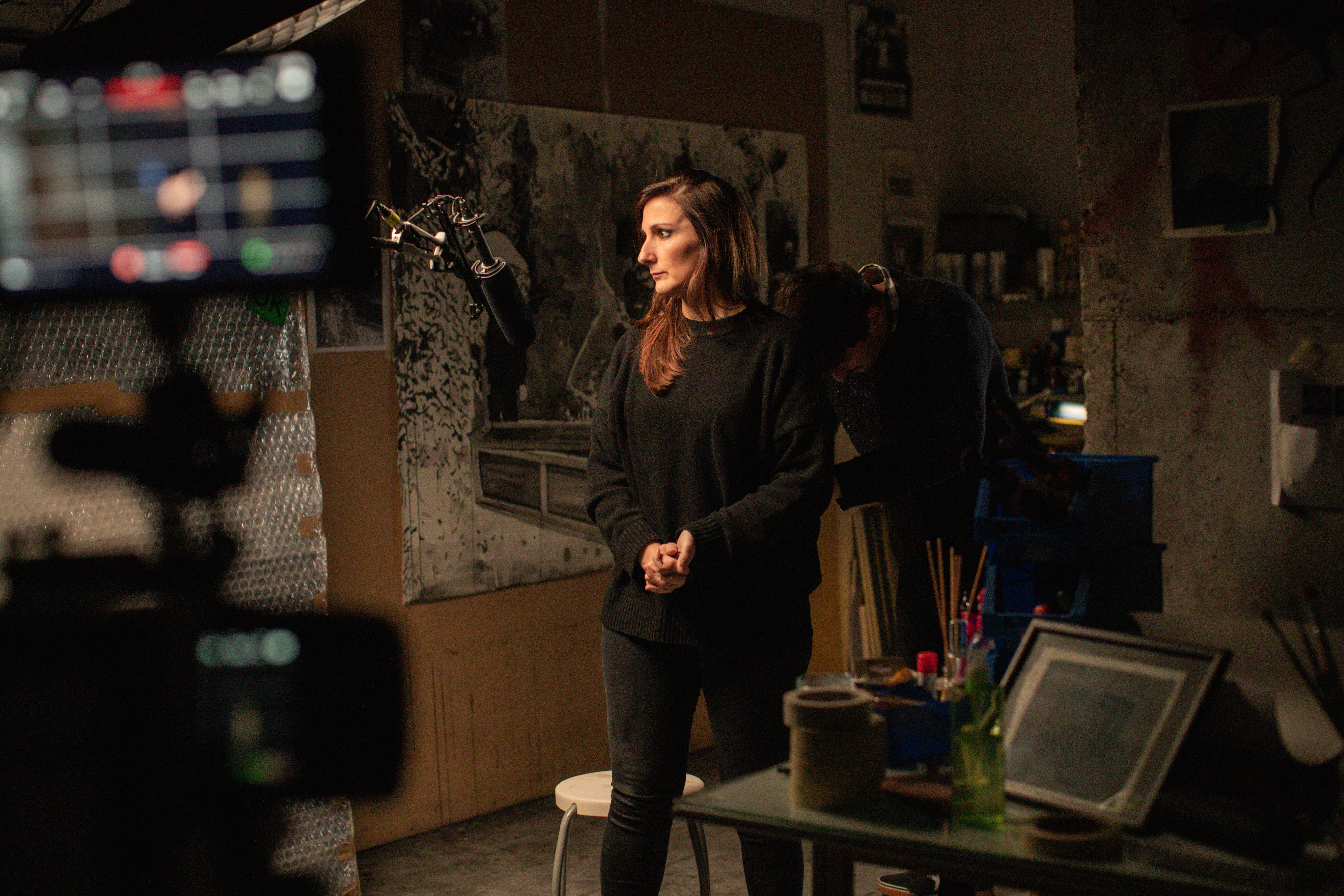
Ihr einzigartiger zeitgenössischer Ansatz in der Kunst erzählt uns vom fragilen künstlerischen Ökosystem.
In einer Welt, die von einer tiefen Krise betroffen ist, die alle Ebenen berührt—sozial, politisch bis hin zum Gesundheitswesen—was passiert mit der Kunstwelt? Die Künstlerin Belén Mazuecos erklärt, dass die Kunstwelt heute eine beispiellose Komplexität aufweist, bedingt durch die Zunahme der Anzahl von Künstlern, die Spezialisierung und Diversifizierung der Vermittler und den Einfluss der Globalisierung und neuer Informationstechnologien, unter anderem. Eines der größten Probleme ist der Mangel an Transparenz und Information, der Künstler daran hindert, klare Strategien zu haben, die sie entwickeln müssen, um diesem Beruf zu folgen. Die extreme Prekarität, die die Kunstwelt erlebt, führt dazu, dass viele Künstler die künstlerische Schöpfung mit anderen Arten von bezahlter Arbeit kombinieren müssen, um weiterhin in ihre Produktionen zu investieren und einen nachhaltigen Lebensunterhalt zu erreichen.
Wir hatten die Gelegenheit, Belén Mazuecos zufällig in Venedig während der Ausstellung des Laguna-Preises zu treffen. Ohne den Gewinner zu kennen, hatten wir ein besonderes Gemälde der Künstlerin ausgewählt, um es in unseren Geschäften auszustellen. Später erfuhren wir, dass es genau das Gemälde war, das bei dem zeitgenössischen Kunstwettbewerb ausgewählt wurde. Was Belén von anderen Künstlern unterscheidet, ist ihr zeitgenössischer Ansatz in der Kunst, bei dem sie durch ihre Werke verschiedene Themen behandelt, die in ihrer Welt passieren.

Die Kunstwerke der Künstlerin zielen darauf ab, eine visuelle Ethnographie der Kunstwelt durch selbstreferenzielle Zeichnungen und Gemälde zu erstellen, die die vielschichtige Realität des künstlerischen Feldes und seine verschiedenen Probleme aufzeichnen und hinterfragen. Ihre Kunst thematisiert aktuelle kulturelle Themen über die Prekarität der Kunstwelt und die Schwierigkeit für den Künstler, Zugang zu einem äußerst komplexen und wettbewerbsfähigen System und Markt zu erhalten und sich darin zu etablieren. Ihr laufendes Projekt Notizen für eine Ethnographie der Kunstwelt ist eine Metapher für das, was in der künstlerischen Industrie passiert, und bezieht sich auf die großen Schwierigkeiten beim Zugang zu einem undurchsichtigen System. Aus diesem Grund nutzt sie die künstlerische Praxis als Plattform für Fragestellungen, indem sie die Dynamiken der zeitgenössischen Kunstwelt aus der Reflexivität und Perspektive der Künstlerin untersucht.

Geboren und aufgewachsen in Granada, Spanien, begann Beléns Reise schon in jungen Jahren, als sie in ihrer Jugend verschiedene Formen des künstlerischen Ausdrucks durch Schreiben, Zeichnen und Malen erkundete. Trotz ihres Talents hatte sie nie in Betracht gezogen, sich professionell der Kunst zu widmen. Es gab keinen künstlerischen Hintergrund in ihrer Familie, und sie beobachtete zu viele Vorurteile gegenüber der Karriere eines Künstlers aufgrund der Prekarität des Berufs. Beléns Welt änderte sich jedoch im Alter von 16 Jahren in der Schule, als sie sich für einen Wahlpflichtkurs im künstlerischen Zeichnen einschrieb. Während dieser Zeit erkannte ihre Lehrerin ihr Talent und ihre Fähigkeiten und brachte sie zum ersten Mal dazu, die Möglichkeit in Betracht zu ziehen, Kunst zu studieren und eine Karriere in der Bildenden Kunst zu verfolgen.
Es gab während dieser Zeit Krisenmomente, aber nichts hat mich je dazu gebracht, das Handtuch zu werfen. Kunst ist ein Langstreckenlauf, der Hingabe und Engagement erfordert und einen großen Opfergeist verlangt.
Ihre Kunstwerke wurden in verschiedenen Galerien ausgestellt, darunter im angesehenen Arsenale in Venedig. In ihren Projekten versucht sie, ein Vehikel zu finden, das am besten zu ihrem Ausdruckszweck passt. Die Materialien, die sie verwendet, sind Kohle auf Papier und Acryl auf Papier oder Leinwand; der Einsatz von Schwarz ermöglicht es ihr, mit der Unmittelbarkeit und dem Abdruck des Schriftstellers zu malen und zu zeichnen. Ihr künstlerisches Ziel ist es, ihre eigenen hedonistischen Bedürfnisse zu befriedigen, und die Manipulation von Materialien bereitet ihr Freude. „Wenn man mit dem ganzen Körper arbeitet, um große Formate zu bewältigen, gerät man in eine Art Trance oder Katharsis-Zustand, der einen sehr gut fühlen lässt“, sagt Belén.
Kunst ist eine Form der Kommunikation, und mit meinen Stücken möchte ich die Kunstwelt zum Nachdenken anregen und beim Betrachter Fragen und Antworten erzeugen.

Die Beobachtung von Kunst, die von ihren Zeitgenossen produziert wird, ist eine weitere große Inspirationsquelle für ihre Kunstprojekte: „Deshalb liebe ich es zu reisen und zeitgenössische Kunstausstellungen, Messen und Veranstaltungen wie die Biennale von Venedig zu besuchen. Meine Studenten sind auch eine Inspirationsquelle, weil sie mich mit ihrer Begeisterung anstecken, ebenso wie meine Eltern für ihre Beharrlichkeit. Sie haben mir ein Verantwortungsbewusstsein, Ausdauer und Disziplin eingeimpft.“ Im Laufe ihrer Karriere waren Marlene Dumas, Tacita Dean und Santiago Ydáñez ihre größten Einflüsse. „Bei ihnen denke ich, dass in meiner Arbeit, Malerei und Zeichnung eine haptische Dimension erlangen und der kreative Prozess eine fast kathartische Funktion erfüllt, weil die Künstler mit dem ganzen Körper arbeiten, um sich ihren großformatigen Stücken zu nähern“, sagte Belén. Andere einflussreiche Künstler in ihrem Leben sind Maurizio Cattelan und Damien Hirst.

Neben diesen bekannten Künstlern ist ein weiterer Künstler, der eine Inspirationsquelle darstellt, ihr Ehemann Pedro Cuadra. Als ebenfalls Maler teilen Belén und Pedro ihren Atelierraum in Granada.
Ich mag es, mit Pedro zu plaudern und von oben und aus der Ferne das Stück zu beobachten, an dem ich in meinem Atelier arbeite. In meiner täglichen Routine im Studio schalte ich das Radio ein, um mich aufzumuntern und mit dem Schaffen zu beginnen.
Kunst hat eine interessante Ähnlichkeit mit Mode; beide können Stücke finden, die uns ergänzen. Belén erklärte, der Künstler müsse ehrlich zu sich selbst sein und versuchen, ein kohärentes persönliches künstlerisches Projekt zu schaffen, mit dem er sich identifiziert, aber andererseits finden Sammler oder Nutzer zeitgenössischer Kunst im Allgemeinen Affinitäten zu bestimmten Künstlern, die ihre eigene Lebensphilosophie verkörpern und mit denen sie sich ebenfalls identifizieren können, was ihnen großen spirituellen Nutzen bringt.

Ihre Hoffnungen sind, eine unmittelbare Zukunft ohne Pandemie zu sehen, in der wir uns wieder verbinden und ohne Sorgen reisen können, und natürlich ist ihr Hauptwunsch jetzt eine Welt in Frieden. Sie fügte hinzu: „Ich sehe einige meiner Träume wahr werden, zum Beispiel eine größere Anerkennung in der Kunstwelt zu erlangen und neue spannende Projekte auf internationaler Ebene zu haben, und diese Illusion hat viel damit zu tun, Manuel Rivera und D!FFERENT auf meinem Weg getroffen zu haben“, sagt Belén.
Ich identifiziere mich sehr mit dem lässigen Kleidungsstil und der Philosophie der Marke. Ich glaube, die persönliche und enge Behandlung und die Betrachtung ihrer Kunden als einzigartige und besondere Persönlichkeiten, denen sie versuchen, den Stil anzubieten, der am besten zu ihnen passt, macht sie zweifellos zu einer Referenzmarke.
Jeder hat nun die Möglichkeit, die Kunstwerke der Künstlerin zu sehen, indem er das neue D!FFERENT-Herrengeschäft in Westerland auf der Insel Sylt besucht.
Wie Belén sagte, ist der ideale Liebhaber für diese Kollektion eine Person, die Kunst liebt und sich um die Nachhaltigkeit der Kunstwelt und der Künstler kümmert. Sie ist für ein Publikum gemacht, das nicht nur Schönheit in der Ikonografie findet, die sie in ihren Stücken darstellt, sondern auch mit der Botschaft empathisiert.

